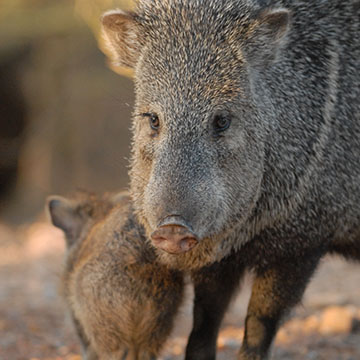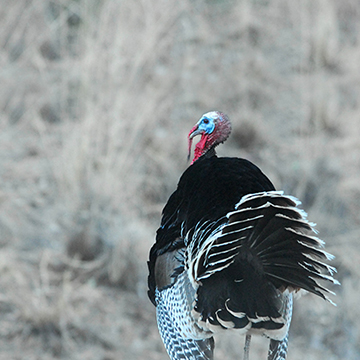How Does the Big Game Draw Work?
There are three phases to the Big Game Drawing – the bonus point pass, the first-second choice pass, and the third-fourth-fifth choice pass. Before each of the three passes in the drawing, each application is processed through a random number generator program.
One random number for the application plus an additional random number for each group bonus point (which includes the Hunter Education and Loyalty bonus points) is generated for that application. The lowest random number generated for an application is used in the drawing process. An application receives a new random number for each Pass of the Big Game Draw.
Group Bonus Points occur in the Big Game Draw when 2 to 4 applicants apply on 1 hunt application. Group bonus points are calculated by adding the genus bonus points, loyalty bonus point, and hunter education bonus point for each applicant on an application and dividing that total by the number of applicants. The Department shall use the average number of bonus points accumulated by the individuals in the group, rounded to the nearest whole number. If the average has decimal digits equal to or greater than .5, the total will be rounded to the next higher number otherwise it is rounded down.
When an application is read and the hunt choices are checked for available permits, there must be enough permits available in a hunt choice for all applicants on the application, including nonresident caps; if not, the application is passed and the next one is read.
The Big Game Drawing, including the 20% bonus point pass, will be processed as follows:
First Pass (20% Bonus Point)
Twenty percent of authorized hunt permit-tags in each hunt number for deer, antelope, elk, turkey, javelina, and spring bear may be issued in this pass. Twenty percent of the total authorized hunt permit-tags (all hunt numbers combined) for both bighorn sheep and buffalo may be issued. Although 20 percent are available, the 10% nonresident caps are still in effect.
- Each valid application is assigned the lowest random number from those generated for that application.
- The application file for each species is sorted by group bonus points in descending sequence and then by random number within the bonus point groupings.
In the Bonus Pass, the first and second hunt choices for all applications with maximum bonus points are looked at first. If permits are still available from the 20% allocation, then the next lower bonus point category is looked at; and so on, until all of the 20% allocation is issued or until all applications with 1 or more bonus points are read. Applications with zero bonus points will not be included in the 20% Bonus Pass of the Draw.
As each application is read, the first and then second hunt choices are checked to see if there are any permits available as part of the 20% bonus point allocation. If there are enough permits available for each applicant on the application without exceeding the 20% allocation or the nonresident cap, the permits are issued to that application. If not, the next application is read and the first and second hunt choices are checked until the entire application file is read. Any unissued permits from the “bonus point pass” will be returned to the available permits for each hunt. The Drawing will then continue to the next two passes.
Second Pass (1st and 2nd Hunt Choices)
- For all valid applications which were unsuccessful in the bonus point pass, new random numbers are generated for each application with the lowest random number being assigned to the application. The same random number process as described above is used.
- The valid application file for each species is then sorted in random number sequence only.
- The first valid application (with the lowest random number) is read, checking the first and then the second hunt choices for available hunt permit-tags. If there are enough hunt permit-tags available for either of the choices and for each applicant on the application, without exceeding the nonresident cap when applicable, then the hunt permit-tags are issued. The next valid application in random number sequence is then checked for available hunt permit-tags until the entire file is read.
Third Pass (3rd, 4th, and 5th Hunt Choices)
- For all applications which were unsuccessful with their first and second choices, new random numbers are generated for each valid application with the lowest random number being assigned to the application. The same random number process as described above is used.
- The valid application file for each species is again sorted into random number sequence.
- Each valid application is then read checking the third, then fourth, and then fifth hunt choices for available hunt permit-tags for all applicants on each application (without exceeding the nonresident cap). When hunt permit-tags are available for one of the three choices, they are issued to the application.
- After the entire file has been read in the third pass, the hunt permit-tag issuance portion of the drawing has been completed. Applicants are then awarded an additional bonus point for each species for which they were unsuccessful with a valid application. The species bonus points for each successful applicant are then zeroed out for the species for which they were issued a hunt permit-tag.


Leftover Permit-Tags
Any hunt permit-tags not issued in the above three passes are eligible for the first-come/ first-serve process. Applications are made by mail (or online, if available) and hunt permit-tags are issued to the first individuals who apply for these hunts. In the first-come/first-serve process, a successful applicant retains all accumulated bonus points.


Portal Account
View draw results, check your bonus points, update your credit card information and apply for hunts issued though the draw system when available. Hunters may apply using the application service when it is available.
Want to Go Hunting in Arizona?
Find ways to experience big game and small game hunting or find a mentored hunt camp.
buy your hunting license
Arizona residents and non-residents 10 years and older need a valid hunting license to hunt in Arizona.
find a mentored hunt camp
The award-winning Outdoor Skills Network is your source for public, hands-on, “learn how to hunt” events.
